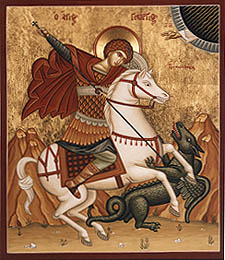Amos 8:4-12
Psalm 138
1 Timothy 2:1-7
Luke 16:1-13
 One of the most popular of traditional stories is the “Robin Hood” or “Cinderella” story. The story begins with a setting of injustice. There are a group of powerful and usually wealthy figures who are in charge – the “bad guys” – who are unfairly oppressing someone else – an individual or a group of people who are poor, powerless, and unable to defend themselves. In “Robin Hood,” the bad guys are Prince John and the Sheriff of Nottingham. In Cinderella, they are the wicked stepmother and the ugly step sisters. In the midst of this injustice, a previously unknown, poor, and apparently powerless figure appears out of nowhere, but this figure surprises everyone by defeating and overcoming the powerful and wealthy villains, the poor are delivered, and everyone lives happily ever after. Robin Hood and Cinderella play this figure in their versions of the story, but the story is still very much with us in contemporary culture. Orphaned teenagers Peter Parker and Harry Potter are Robin Hood and Cinderella respectively in our own day.
One of the most popular of traditional stories is the “Robin Hood” or “Cinderella” story. The story begins with a setting of injustice. There are a group of powerful and usually wealthy figures who are in charge – the “bad guys” – who are unfairly oppressing someone else – an individual or a group of people who are poor, powerless, and unable to defend themselves. In “Robin Hood,” the bad guys are Prince John and the Sheriff of Nottingham. In Cinderella, they are the wicked stepmother and the ugly step sisters. In the midst of this injustice, a previously unknown, poor, and apparently powerless figure appears out of nowhere, but this figure surprises everyone by defeating and overcoming the powerful and wealthy villains, the poor are delivered, and everyone lives happily ever after. Robin Hood and Cinderella play this figure in their versions of the story, but the story is still very much with us in contemporary culture. Orphaned teenagers Peter Parker and Harry Potter are Robin Hood and Cinderella respectively in our own day.
There are lots of ways to tell the biblical story, and the Robin Hood/Cinderella variation is one possible framework. Jacob’s son Joseph is the youngest of twelve brothers, who is sold into slavery, but eventually rises to be Pharaoh’s right-hand man, to deliver Egypt from famine, and to save his own family, including the brothers who had betrayed him. Jacob’s descendants are slaves in Egypt, but they are delivered by Moses, himself the son of poor Israelites, who was pulled out of the Nile as a baby floating in a basket. In the New Testament, we are familiar with Mary’s prayer, The Magnificat: “My soul magnifies the Lord, and my spirit rejoices in God my Savior, for he has looked with favor on the lowliness of his servant. . . . He has brought down the powerful from their thrones, and lifted up the lowly; he has filled the hungry with good things, and sent the rich away empty.” (Luke 1:46-48, 52-53)
The Robin Hood story can provide a kind of common framework for making sense of this morning’s lectionary readings. Turning to Amos, we find that the theme of the reading is the exploitation of the poor by the wealthy. Amos is historically the first of the writing prophets, written between 760 and 740 BC. The book is a judgment on the sins of the nation of Israel, and, unlike later prophets, Amos’s message is entirely negative. He offers no message of hope or forgiveness. Amos threatens that Israel will go into exile, and that is exactly what eventually happened. (more…)


